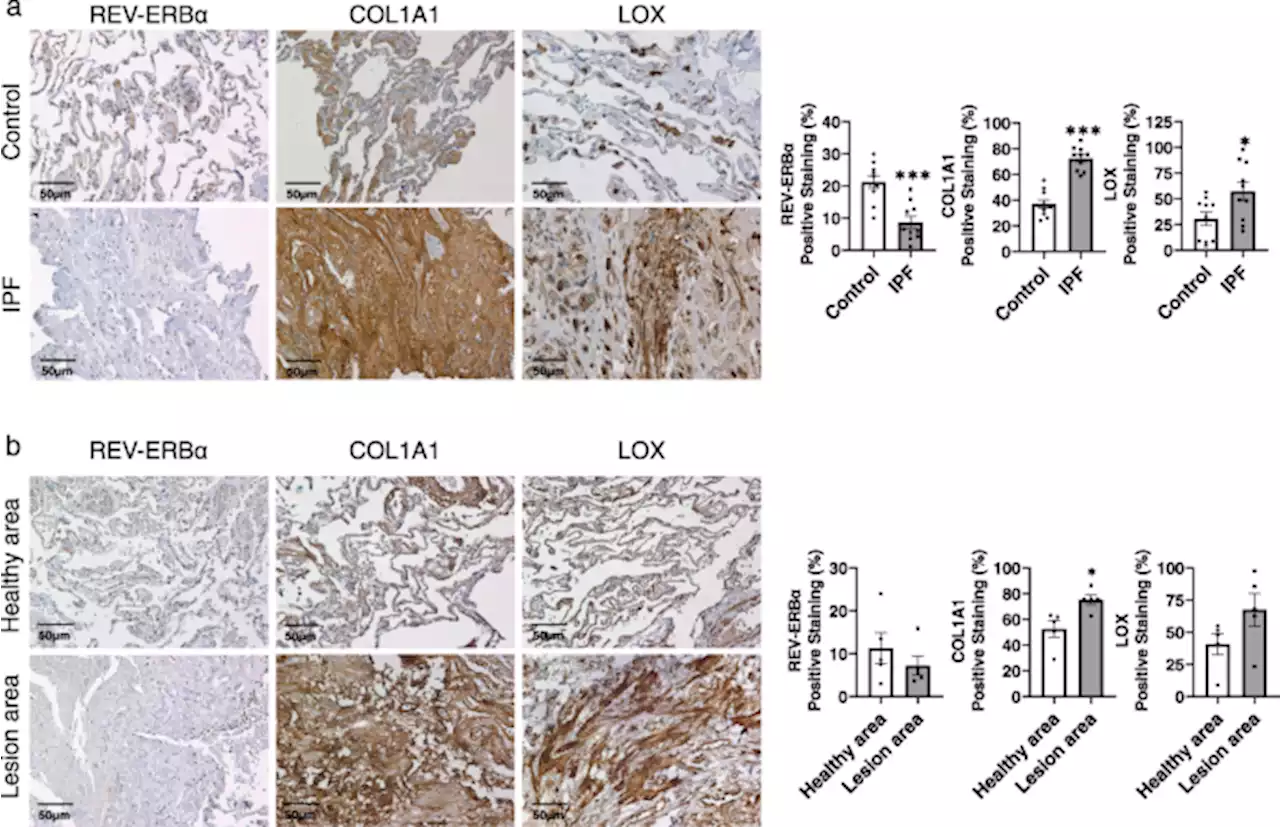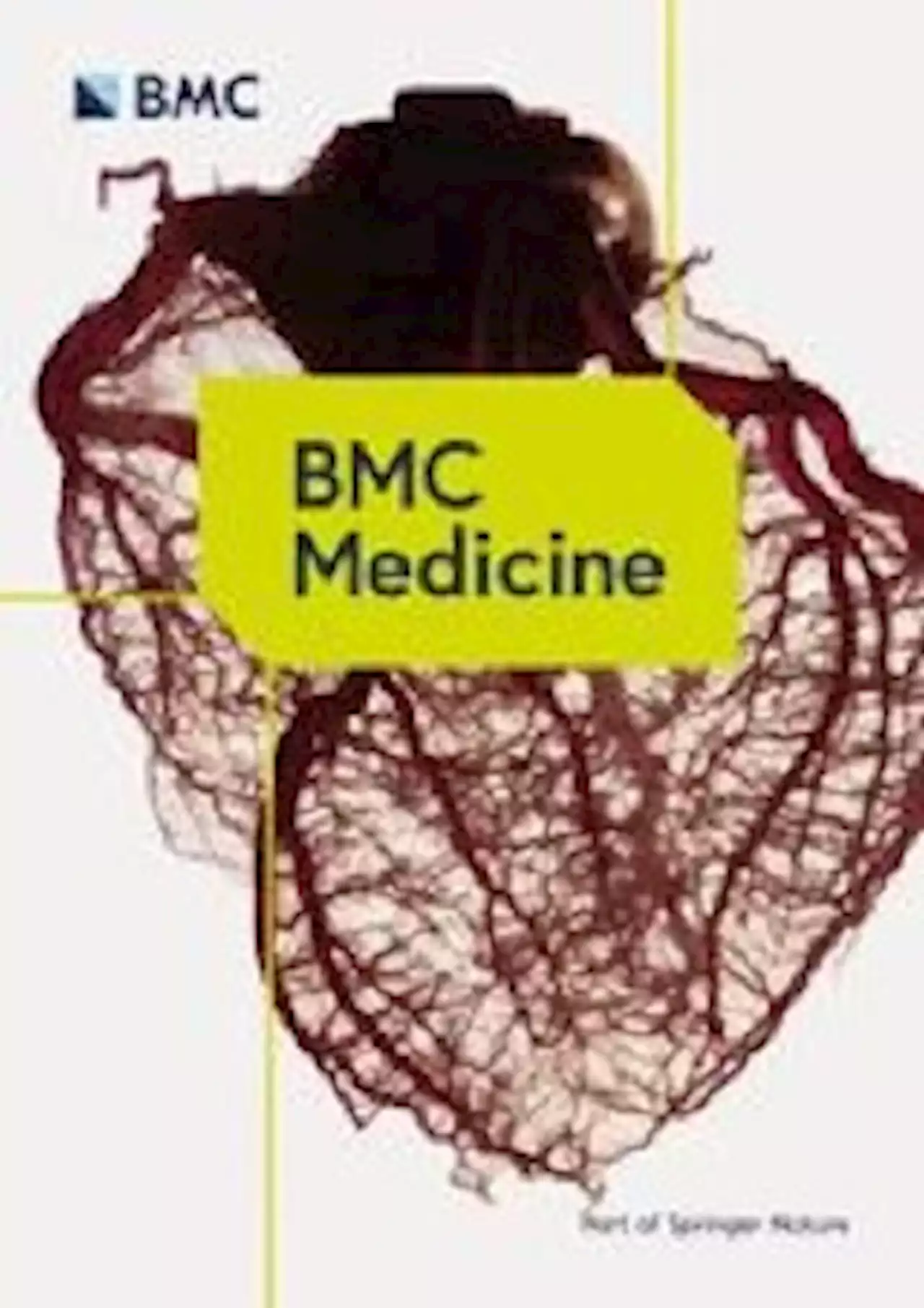Investigational drug may improve stemcelltransplantation for multiple myeloma patients WUSTLmedschool aacr NatureMedicine
Springer Nature remains neutral with regard to jurisdictional claims in published maps and institutional affiliations.All patients underwent HSPC mobilization and collection on days 1–5 . In the AM of days 1–5 , all patients received G-CSF via subcutaneous injection indicated by the syringe in blue. : In addition to G-CSF, in the PM of day 4 , patients received either motixafortide or placebo via subcutaneous injection indicated by the syringe in green.
Pearson correlation with green line representing the regression curve and the shaded green area representing the 2-sided 95% CI presented with respective p-values. All statistical analyses were 2-sided.
Österreich Neuesten Nachrichten, Österreich Schlagzeilen
Similar News:Sie können auch ähnliche Nachrichten wie diese lesen, die wir aus anderen Nachrichtenquellen gesammelt haben.
 New fund launched to bring nature back to life in NIOver three quarters of Northern Irish folks are worried about the impact nature loss will have on their lives, according to a YouGov survey
New fund launched to bring nature back to life in NIOver three quarters of Northern Irish folks are worried about the impact nature loss will have on their lives, according to a YouGov survey
Weiterlesen »
 Circadian clock molecule REV-ERBα regulates lung fibrotic progression through collagen stabilization - Nature CommunicationsThe molecular clock REV-ERBα regulates lung injury during fibrosis, but the role of REV-ERBα in fibrogenesis remains unknown. Here, the authors show that REV-ERBα interacts with the lysyl oxidase-collagen axis during fibrogenesis and demonstrate the therapeutic potential of Rev-erbα agonist against lung fibrosis.
Circadian clock molecule REV-ERBα regulates lung fibrotic progression through collagen stabilization - Nature CommunicationsThe molecular clock REV-ERBα regulates lung injury during fibrosis, but the role of REV-ERBα in fibrogenesis remains unknown. Here, the authors show that REV-ERBα interacts with the lysyl oxidase-collagen axis during fibrogenesis and demonstrate the therapeutic potential of Rev-erbα agonist against lung fibrosis.
Weiterlesen »
 Type I interferon shapes brain distribution and tropism of tick-borne flavivirus - Nature CommunicationsHere the authors combine a multimodal imaging-snRNAseq transcriptomics strategy to provide insight into the distribution of a neurotropic tick-borne flavivirus in the brain, and show that absence of interferon signaling increases infection of resident microglia.
Type I interferon shapes brain distribution and tropism of tick-borne flavivirus - Nature CommunicationsHere the authors combine a multimodal imaging-snRNAseq transcriptomics strategy to provide insight into the distribution of a neurotropic tick-borne flavivirus in the brain, and show that absence of interferon signaling increases infection of resident microglia.
Weiterlesen »
 Study links poor diet to 14 million cases of type 2 diabetes globallyA research model of dietary intake in 184 countries, developed by researchers at the Friedman School of Nutrition Science and Policy at Tufts University, estimates that poor diet contributed to over 14.1 million cases of type 2 diabetes in 2018, representing over 70% of new diagnoses globally. The analysis, which looked at data from 1990 and 2018, provides valuable insight into which dietary factors are driving type 2 diabetes burden by world region. The study was published April 17 in the journal Nature Medicine.
Study links poor diet to 14 million cases of type 2 diabetes globallyA research model of dietary intake in 184 countries, developed by researchers at the Friedman School of Nutrition Science and Policy at Tufts University, estimates that poor diet contributed to over 14.1 million cases of type 2 diabetes in 2018, representing over 70% of new diagnoses globally. The analysis, which looked at data from 1990 and 2018, provides valuable insight into which dietary factors are driving type 2 diabetes burden by world region. The study was published April 17 in the journal Nature Medicine.
Weiterlesen »
 Maternal metabolic syndrome in pregnancy and child development at age 5: exploring mediating mechanisms using cord blood markers - BMC MedicineBackground There is limited evidence on how the classification of maternal metabolic syndrome during pregnancy affects children’s developmental outcomes and the possible mediators of this association. This study uses a cohort sample of 12,644 to 13,832 mother–child pairs from the UK Born in Bradford Study to examine the associations between maternal metabolic syndrome classification (MetS) and child development outcomes at age 5, using cord blood markers as candidate mediators. Methods Maternal cardiometabolic markers included diabetes, obesity, triglycerides, high-density lipoprotein cholesterol, blood pressure, hypertension, and fasting glucose during pregnancy. Cord blood markers of high-density lipoprotein cholesterol, low-density lipoprotein cholesterol, triglycerides, leptin, and adiponectin were used as child mediators. Child outcomes included two starting school variables: British Picture Vocabulary Scale (BPVS) and the Letter Identification Assessment (LID), and five developmental milestone domains from a national UK framework: (1) communication and language (COM); (2) personal, social, and emotional (PSE); (3) physical development (PHY); (4) literacy (LIT); and (5) mathematics (MAT). Mediation models were used to examine the associations between the classification of maternal metabolic syndrome and child developmental milestones. Models were adjusted for potential maternal, socioeconomic, and child confounders such as maternal education, deprivation, and gestational age. Results In mediation models, significant total effects were found for MetS associations with children’s development in the LIT domain at age 5. MetS predicted individual cord blood mediators of lower HDL and increased leptin levels in both adjusted and unadjusted models. Total indirect effects (effects of all mediators combined) for MetS on a child’s COM and PSE domain were significant, through all child cord blood mediators of LDL, HDL, triglycerides, adiponectin, and leptin for adjusted
Maternal metabolic syndrome in pregnancy and child development at age 5: exploring mediating mechanisms using cord blood markers - BMC MedicineBackground There is limited evidence on how the classification of maternal metabolic syndrome during pregnancy affects children’s developmental outcomes and the possible mediators of this association. This study uses a cohort sample of 12,644 to 13,832 mother–child pairs from the UK Born in Bradford Study to examine the associations between maternal metabolic syndrome classification (MetS) and child development outcomes at age 5, using cord blood markers as candidate mediators. Methods Maternal cardiometabolic markers included diabetes, obesity, triglycerides, high-density lipoprotein cholesterol, blood pressure, hypertension, and fasting glucose during pregnancy. Cord blood markers of high-density lipoprotein cholesterol, low-density lipoprotein cholesterol, triglycerides, leptin, and adiponectin were used as child mediators. Child outcomes included two starting school variables: British Picture Vocabulary Scale (BPVS) and the Letter Identification Assessment (LID), and five developmental milestone domains from a national UK framework: (1) communication and language (COM); (2) personal, social, and emotional (PSE); (3) physical development (PHY); (4) literacy (LIT); and (5) mathematics (MAT). Mediation models were used to examine the associations between the classification of maternal metabolic syndrome and child developmental milestones. Models were adjusted for potential maternal, socioeconomic, and child confounders such as maternal education, deprivation, and gestational age. Results In mediation models, significant total effects were found for MetS associations with children’s development in the LIT domain at age 5. MetS predicted individual cord blood mediators of lower HDL and increased leptin levels in both adjusted and unadjusted models. Total indirect effects (effects of all mediators combined) for MetS on a child’s COM and PSE domain were significant, through all child cord blood mediators of LDL, HDL, triglycerides, adiponectin, and leptin for adjusted
Weiterlesen »
